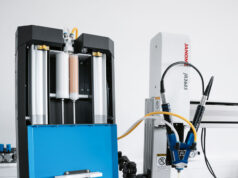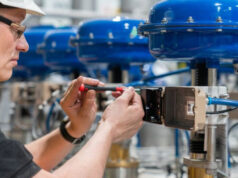| Don’t forget to STOP for reliable motion – Rodless Cylinder Tips OK, you need to size a pneumatic rodless cylinder. You gather all the application parameters: available air pressure, magnitude and orientation of the applied load, cycle rate, and the stroke length. Then you determine which bearing system can support this load and provide reliable linear motion. What are we forgetting? Objects in motion remain in motion. How is this thing going to stop? Properly stopping the load at the end of stroke is critical to long term reliable motion. | |||
 | Pneumatic cylinders provide very cost effective high speed, high thrust motion compared to electric actuators. Pneumatic cylinders are very powerful, and can move large masses very fast. A large mass moving fast generates a large amount of inertia when it reaches the cylinder’s end-of-stroke. This inertia is going to create a large load spike of which the actuator will ultimately absorb. This load spike could be several orders of magnitude greater than the applied load during the stroke. It is important to consider these inertia loads and make sure the actuator is rated to handle them. The magnitude of the inertia load spike is simply a function of how the load mass is decelerated and stopped. The primary methods used to decelerate cylinders are cushions and shocks. | ||
| Cushions are the least expensive and are normally integrated into the cylinder head, but they have limited capabilities. Cushions rely on compressible air to decelerate the load. There is a limit to the combinations of load and mass a cushion can handle. When these limits are exceeded, shocks are required. Improper adjustment of the cushions can magnify the inertia load spikes. Too light of a cushion and the load will slam into the head at the end of stroke. Too heavy of a cushion and the load will bounce causing the load to reverse direction very fast, which will also create very high inertia moments on the actuator. Shocks provide the most controlled means of stopping the load and can stop heavier loads faster than cushions. A sample calculation of inertia loading is illustrated below. | |||
 | In this example, the cylinder is carrying a 10 pound load and traveling at a final velocity of 80 inches per second when coming in contact with the shock absorber located at the ends of the cylinder stroke. The load must be stopped within the shock absorber stroke of 0.50 inches. The Mz and equivalent force applied to the cylinder’s load carrying device need to be within the limits of the cylinder’s rating capacities To determine this: | ||
| a = g | Vf² = 2s | (80 in/sec)² 2 x 0.50 in | = 6400 in/sec² (deceleration rate) |
| Deceleration Force = | |||
| a x g | P = | 6400 in/sec² 386.4 in/sec² | x 10 lbs = 165.6 lbs |
| Therefore, the Mz created during stopping is: Compensating for high inertia loads can be achieved in a variety of ways. If the actuator selected exceeds the inertia requirements of the application, consider a different style of actuator with a higher capacity bearing system. If that is not an option, consider controlling the deceleration rate to limit the final velocity of the load. A lower velocity at the end of stroke, means a lower deceleration rate to bring the load to a stop. Velocity can be controlled by using flow controls or by removing pressure before the end of stroke, essentially letting the load coast from its own momentum. Positioning shocks at the center of gravity of the load is the ideal situation for s | |||









